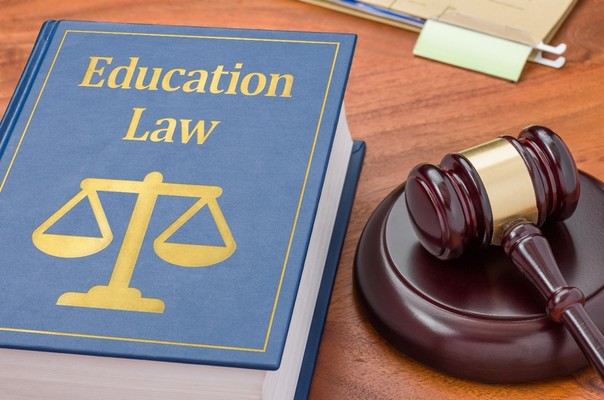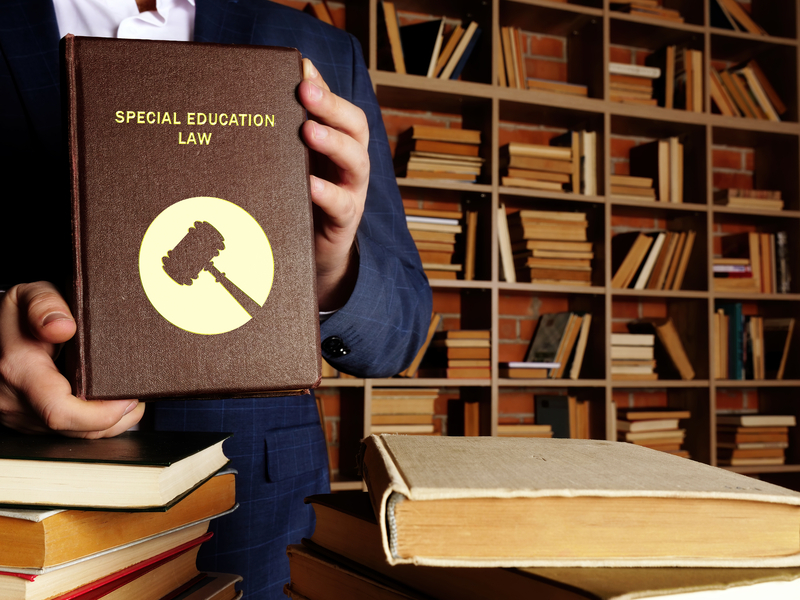
Education is a tool of the big social order. When society changes, schooling, earlier or later, also affects. Few actions or agencies, but change as gradually, or at such tiny increments, as formal schooling both colleges and schools in addition to both private and public institutions. Education's roots are deep and broad, penetrating virtually every aspect of society. Therefore, education is subject to almost every governmental force, such as those who want change and the ones that are looking to safeguard the status quo.
Postsecondary institutions--schools and universities--have come to be both ponderous. With the dawn of post-- World War II enrollment increases; the importance of the university-based search for keeping the country's economic, health, and military preeminence; along with the significant premise of student financial aid by authorities, higher education has become a significant feature of the political landscape and become engulfed by a lot of the inertia that immobilizes reduced schools.
However, even as topics of increasing politicization, and even though just at a glacial rate, colleges and schools do change. Formal schooling at the start of the twenty-first century demonstrated several differences from that thirty years past, and it was different from what kids and parents experienced in the first part of the twentieth century.
The Fundamentals of Educational Policy
Societies depend upon the casual socialization of immigrants and youth as well as the formal schooling of taxpayers to carry on the polity and ease pursuit of people's collective and individual tastes. As a result of this mediating function in keeping a society, formal schooling systems, and people who steer them are remarkably sensitive to adjustments in taxpayers' will or change decision-makersakers' perspectives. If a society devotes itself exposed to a threat or has been shrouded in a significant economic, scientific, demographic, or environmental transformation, the schooling process is a primary tool to which it functions to adapt to change and locate new social stability.
The Pressure for Reform in American Education
The twentieth century, especially its past two years, represented a period of unusually intense shift. A concise overview of what happened internationally in this interval suggests the reason America's education system was under such deep pressure.
Modern communication and communication technologies contributed to internationally oriented, highly portable, and fast-paced societies. Economic improvements created a heretofore-unknown amount of human, organizational, and global interdependence. The USA emerged as the top political and economic power on earth. This condition, combined with globalization, created additional military, diplomatic, and diplomatic responsibilities for the country and its taxpayers.
The Public Values Underlying Education Policy
American civilization includes three strongly held values that greatly influence public policy in education and general policy specifically. They're equality, efficiency, and independence. Government actions regarding domestic protection, housing, taxation, antitrust law, racial desegregation, and hundreds of other coverage dimensions, such as schooling, are prompted and modeled by at least one of those three values.
Efficiency Education as a Policy Instrument in the Pursuit of Equality and Liberty
Various large scale social movements have, over time, led to formal schooling's location among society's leading institutions. As an instance, the sixteenth-century Protestant Reformation encouraged schooling as a way to facilitate human interpretation of religious scriptures.
In the same way, one of the eighteenth-century leaders of this new republic, the USA, education was regarded as a way to allow one to engage as an equal from the affairs of government. Under these conditions, schooling was important to make sure political freedom. It wasn't till the nineteenth century, but that formal schooling started to assume importance for economic functions in Western societies.
Equality Access to Instruction
In the latter half of the twentieth century, courts started to employ the U.S. Constitution's equal protection clause into a range of societal conditions, including voting rights, housing, occupation, and schooling. This Civil War--age constitutional provision extended the mantle of federally protected civil liberties to add state authorities. Therefore, the 1950s and many decades afterward indicated a period of extreme judicial activism in which judges started to make sure that guaranteed civil rights weren't overridden by local or state policies. A long-heralded age of"local control" about schools was about to be considerably restricted.
The subject of racial desegregation likely triggered controversy in the USA than any other public policy issue in the last half of the twentieth century.
Racial desegregation. In subsequent decades, researchers, mostly sociologists, conducted several analytical studies to estimate the ramifications of desegregating education. No obvious route of direct evidentiary evidence exists regarding whether minority pupils gain from desegregated school configurations. The initial social science study cited from the U.S. Supreme Court contest in the first peer-reviewed century.
Instruction Structure.
From the end of the twentieth century, many gross monetary disparities mitigate. Just a couple of egregious inequities stayed.
In the latter years of the twentieth century, proponents of greater adoption of education financing started to alter traditional"equal security" arguments. This court held the country accountable not just for equal finances but also for equal educational opportunity. The Kentucky conclusion gave rise to another genre of what's come to be called"adequacy" suits. In such suits, the supply of college dollars hasn't become the thought as far as the ramifications of college bucks.

Specific schooling. Special schooling was the most recent school public category to be the focus for reform. The analysis proceeded on two measurements: the supply of college services to pupils with physical and psychological disabilities and the supply of bilingual instruction to non-school or limited-English-speaking pupils.
The historical inability or unwillingness of college districts to serve adequately the needs of pupils with disabilities recognize. As had been the case with school finance inequities, but there seemed no simple means where the situation changed.
Collective bargaining. Equity concerns haven't focused upon pupils exclusively. Professional teachers also have sought means by which they treat more equally.
Higher schooling. Additionally, the Higher Education Act requires schools to pledge themselves to not discriminate racially, or in different ways should they utilize federal funds to subsidize student financial aid, encourage the study, or build dormitories.
The Pursuit of Performance in Education
Performance advocates usually neglecting the significant growth in functions due to America's public schools, asserting that per-pupil expenditures nationally have escalated into a troublesome way. They assert that when inflation is disregarding, the per-pupil growth in school spending between 1950 and 2000 has been 500 percent. The extra funds used to buy things that base on traditional schooling wisdom will ease production. By way of instance, class sizes reduce, and lots of categories of educational and administrative specialists get to add.
School district consolidation has been just another tactical arrow at the forefront of pre--World War II schooling efficiency proponents. By 1930 the number of local school districts from the USA had attained its high point--over 125,000 distinct units. By 1976 this amount reduces to about 16,000. The number of districts bandied about 14,000 at the start of the twenty-first century. This drastic decrease in the number of components of a technical local authorities happened in a way so subtle as almost to escape the notice of policy analysts. Additionally, it took place with no shred of persuasive proof that it would save money. Regardless, it represents one of the most striking changes in America's patterns of authority.
At different points in U.S. schooling history, the expression liability seems like a sign. It signifies a policy attempt to control escalating school expenses and inadequate pupil achievement by utilizing techniques that urges imply will improve faculty growth. The efficacy motion of the late twentieth and early twenty-first centuries, working under the episodically common tag of liability, has been launched from the 1983 look of A Nation at Risk, an extremely visible national report from the National Commission on Excellence in Education. Ironically, rarely has a blue-ribbon record had this kind of widespread and long-term outcome and had such a deep and lasting effect on public opinion and policy.
The report made the impression that the United States is going cling to a deluge of international dominance unless its colleges were quickly left more strict. Additionally in the intervening period, the Western market plummeted, and its vaunted schooling system was not able to shield it from its unsuccessful financial practices and protectionist trade policies. Indeed, starting in 2000, Japan took measures to design its education system more following the USA.
Illustrating the Changes
The first twenty-first-century continuation of instructional responsibility has an accompanying lexicon. Including ideas and terms like high-performance schools, high-stakes analyzing, academic responsibility, faculty effectiveness, organizational efficacy, teacher productivity, functionality funding, charter schools, alternative schools, break-the-mold colleges, privatizing, outsourcing, and cover outcomes. These and similar conditions illustrative of these slogans, issues, and subjects that govern American education policy and practice at the start of the twenty-first century.
Under the slogans, two big change strategies have developed. One is known as the standards movement. The other travels beneath the banner of"contest" or "privatization." Both approaches aren't mutually incompatible. Each requires authorities specification of learning criteria or curricular goals that colleges expecting to fulfill.
Conclusion
Will liability attempts to succeed in bettering U.S. college performance? Will schools and universities finally be exposed to the identical type of efficacy requirements advocated by public colleges? Will public financing of religious and private schools finally be accepted, and, if so, will these arrangements demonstrate the undoing of the great American search motor, people education?
There's not any attempt here in predicting the results of these questions. The answers will come in time and, undoubtedly, are the topic of future investigation and comment.
